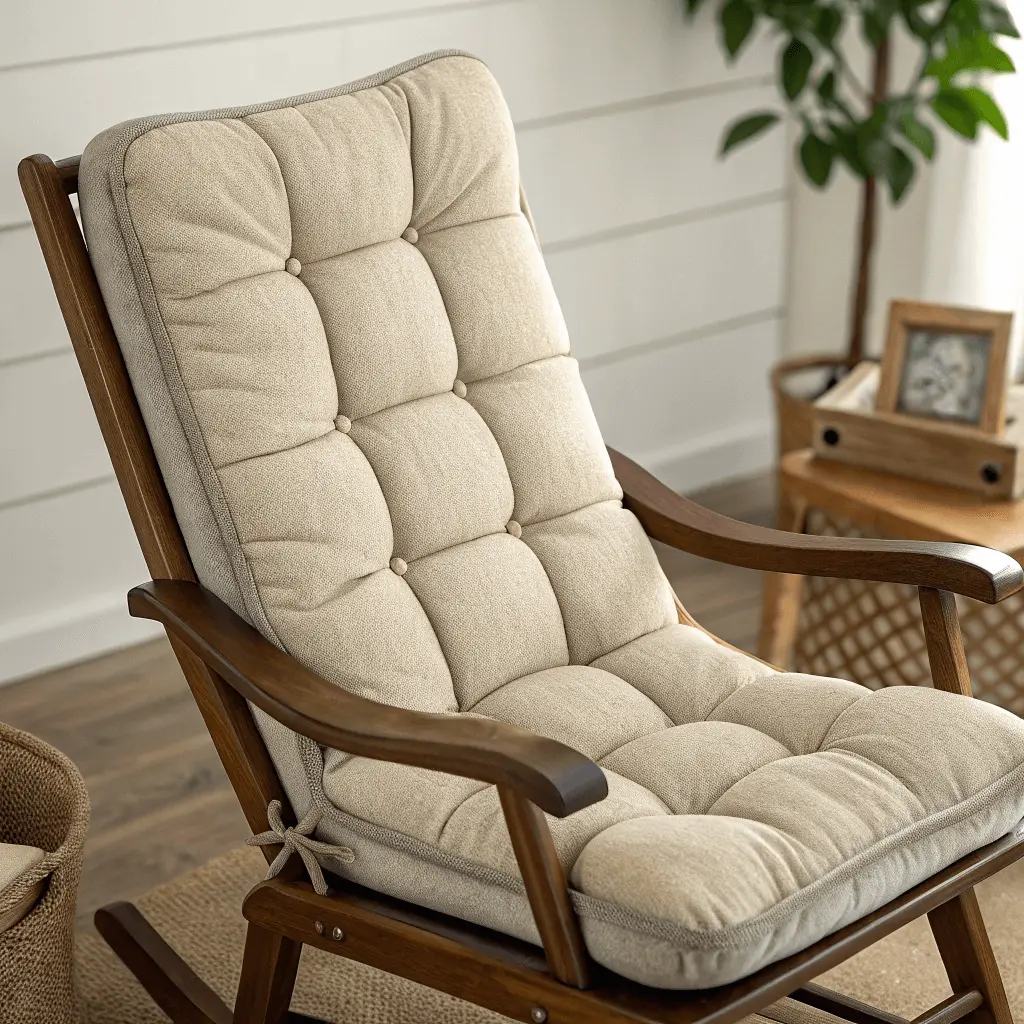Rocking chairs are more than just a seat—they’re a place of relaxation, comfort, and even family memories. Whether you use yours in a nursery, on the porch, or by the fireplace, the cushions you choose can make all the difference in comfort and style. But here’s the catch: not all fabrics are created equal. If you want your rocking chair cushions to last for years, choosing the right material is just as important as the style or color.
In this guide, we’ll walk you through the best fabrics for rocking chair cushions, including their pros, cons, and ideal uses so you can make an informed choice.
If your rocking chair lives outdoors, Sunbrella is a top-tier choice. Known for its resistance to UV rays, water, and mildew, it keeps rocking chair cushions looking vibrant for years.
- Pros: Fade-resistant, mold- and mildew-proof, easy to clean.
- Cons: Higher price point, slightly stiffer feel initially.
- Best For: Porch or patio rocking chairs exposed to the elements.
Olefin is a synthetic fabric designed for heavy wear. It resists moisture, stains, and fading, making it a practical pick for active households.
- Pros: Budget-friendly, durable, quick-drying.
- Cons: Limited texture variety compared to cotton or linen.
- Best For: Outdoor and high-traffic indoor areas.
Cotton is soft, breathable, and available in countless colors and patterns. While it’s a timeless choice, it needs more upkeep to stay looking fresh.
- Pros: Comfortable, widely available, easy to style.
- Cons: Fades faster in direct sunlight, prone to staining if untreated.
- Best For: Indoor rocking chairs in low-traffic areas.
Polyester blends offer the best of both worlds: comfort and durability. Many are treated to resist stains and fading.
- Pros: Affordable, versatile, and easy to clean.
- Cons: Can trap heat, depending on weave.
- Best For: Indoor use or covered porches.
Linen brings a refined, natural texture to your rocking chair cushions, but it’s less resistant to wear and stains.
- Pros: Luxurious feel, beautiful drape.
- Cons: Wrinkles easily, requires more maintenance.
- Best For: Decorative indoor rocking chairs.
If spills and stains are a major concern—say, in a kitchen or workshop—vinyl-coated fabrics are practically wipe-clean.
- Pros: Extremely easy to maintain, water-resistant.
- Cons: Less breathable, can feel sticky in heat.
- Best For: Utility areas or situations where mess is unavoidable.
- Match fabric to location: Outdoor cushions need UV and moisture protection; indoor cushions can prioritize softness.
- Think about maintenance: If you don’t want to fuss over cleaning, choose a performance fabric.
- Consider your style: The right fabric not only lasts longer but also enhances the look of your rocking chair.
By selecting the right fabric for your rocking chair cushions, you’re not just improving comfort—you’re protecting your investment and ensuring that your favorite seat stays beautiful and functional for years to come.

